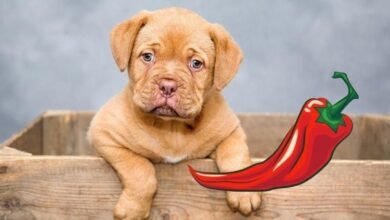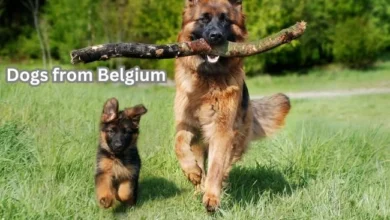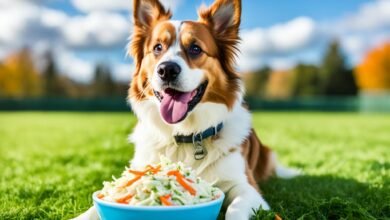
Is it bad for dogs to eat cat food? Many pet owners have caught their dogs sneaking a bite from the cat’s bowl and wonder whether it’s harmful. While an occasional nibble may not cause immediate harm, cat food is not designed for a dog’s nutritional needs. If consumed regularly, it can lead to digestive problems, weight gain, nutritional deficiencies, and serious health conditions like pancreatitis and kidney disease.
Dogs and cats have different dietary requirements, and their food is formulated accordingly. In this guide, we’ll explore that- Is it bad for dogs to eat cat food and how cat food affects a dog’s health, the risks of long-term consumption, and what pet owners can do to prevent their dogs from eating cat food.
Why Are Dogs Attracted to Cat Food?
Dogs are naturally curious eaters, and cat food is highly appealing to them for several reasons:
- High Protein and Fat Content – Cat food is formulated for obligate carnivores (cats), so it contains more animal-based proteins and fats than dog food.
- Strong Aroma and Flavor – The high meat content in cat food makes it more fragrant and appealing.
- Different Texture – Wet cat food is soft and palatable, while dry cat food has a crunchier texture that some dogs enjoy.
- Availability – If cat food is left out for free-feeding, dogs may take advantage of easy access.
Although cat food may seem like a tasty alternative, it is not designed for a dog’s long-term health.
Is It Bad for Dogs to Eat Cat Food? The Health Risks
1. Digestive Problems
Cat food is richer and denser than dog food, which can cause digestive discomfort in dogs. Common symptoms include:
- Diarrhea – The high fat and protein content can upset a dog’s stomach.
- Vomiting – Some dogs may experience nausea or stomach irritation after consuming cat food.
- Gas and Bloating – The lack of fiber in cat food can lead to digestive issues and discomfort.
2. Weight Gain and Obesity
Cat food has more calories and fat than dog food, leading to rapid weight gain in dogs. Obesity increases the risk of:
- Diabetes
- Joint issues and arthritis
- Heart disease and high blood pressure
3. Pancreatitis (Inflammation of the Pancreas)
A high-fat diet can trigger pancreatitis, a painful and potentially life-threatening condition. Symptoms include:
- Loss of appetite
- Severe vomiting and diarrhea
- Lethargy and abdominal pain
4. Nutritional Deficiencies and Imbalances
Dogs require a balanced mix of proteins, fats, carbohydrates, fiber, vitamins, and minerals. Cat food lacks essential nutrients that dogs need, such as:
- Carbohydrates for energy – Dogs require some carbs in their diet, while cats do not.
- Vitamin A regulation – Cat food has higher vitamin A levels, which can be harmful to dogs in excess.
- Fiber for digestion – Dogs need fiber to support digestion, while cat food is low in fiber.
5. Kidney and Liver Strain
Cat food’s high protein content can put extra stress on a dog’s kidneys and liver, leading to:
- Kidney disease
- Liver dysfunction
- Increased thirst and urination
Older dogs and those with existing kidney or liver issues are particularly vulnerable.
What to Do If Your Dog Eats Cat Food
If your dog has eaten cat food, here’s what you should do:
✔ Monitor for Symptoms – Watch for vomiting, diarrhea, bloating, or changes in appetite.
✔ Provide Plenty of Water – Cat food is richer and saltier, so hydration is crucial.
✔ Return to a Balanced Diet – Encourage your dog to eat their regular dog food as soon as possible.
✔ Prevent Future Access – Move the cat’s food bowl to a high or separate location.
If your dog shows signs of serious illness after eating cat food, consult your veterinarian immediately.
How to Prevent Dogs from Eating Cat Food
If your dog frequently eats cat food, take these steps to stop the behavior:
✔ Feed Pets in Separate Areas – Place your cat’s food in a high location or a separate room with a baby gate.
✔ Use an Automatic Feeder – Some feeders only open when they detect the cat’s microchip, preventing dogs from accessing the food.
✔ Train Your Dog – Teach commands like “leave it” and reward them for ignoring the cat’s food.
✔ Remove Leftover Cat Food – Feed your cat at scheduled times and remove uneaten food afterward.
✔ Ensure Your Dog’s Diet is Satisfying – Feed your dog a high-quality diet with plenty of protein and fiber to reduce cravings for cat food.
Healthier Alternatives to Cat Food for Dogs
If your dog craves cat food, try offering these high-protein alternatives that meet their nutritional needs:
✔ Lean Meats – Cooked chicken, turkey, or beef.
✔ Eggs – A protein-rich, digestible food that’s safe in moderation.
✔ Pumpkin or Sweet Potato – Fiber-rich foods that aid digestion.
✔ Dog-Specific High-Protein Kibble – Look for high-quality dog food with real meat as the first ingredient.
✔ Dog-Friendly Wet Food – If your dog prefers wet food, choose a high-protein canned dog food.
✔ Yogurt or Cottage Cheese – Provides protein and probiotics for digestion.
Final Verdict: Is It Bad for Dogs to Eat Cat Food?
Yes, it is bad for dogs to eat cat food regularly. While a small amount won’t cause immediate harm, long-term consumption can lead to serious health issues, including obesity, pancreatitis, digestive problems, and organ strain. Since cat food lacks the right balance of nutrients for dogs, it should never replace a well-formulated dog diet.
If your dog frequently eats cat food, it’s crucial to take steps to prevent access and provide them with a diet specifically designed for their needs. By keeping pet food separate, training your dog, and offering healthier alternatives, you can ensure your dog stays happy and healthy.
For any concerns about your dog’s health after consuming cat food, consult a veterinarian for professional advice.




